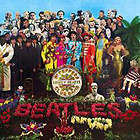 Oasis, The Killers and Kaiser Chiefs are to record their own versions of tracks from The Beatles\' \"Sgt Pepper\'s Lonely Hearts Club Band\" to mark the legendary album\'s 40th anniversary. The rock bands, alongside The Fratellis, Travis, Razorlight and James Morrison, are making cover versions for a special two-hour BBC radio program. The anniversary broadcast airs on June 2, 2007.
Oasis, The Killers and Kaiser Chiefs are to record their own versions of tracks from The Beatles\' \"Sgt Pepper\'s Lonely Hearts Club Band\" to mark the legendary album\'s 40th anniversary. The rock bands, alongside The Fratellis, Travis, Razorlight and James Morrison, are making cover versions for a special two-hour BBC radio program. The anniversary broadcast airs on June 2, 2007.© Drummerszone.com 2002-2025 Drummerszone.com is a Musicpublishers.nl website.
Oops, you're not logged in!
The more you like
the more you get!
